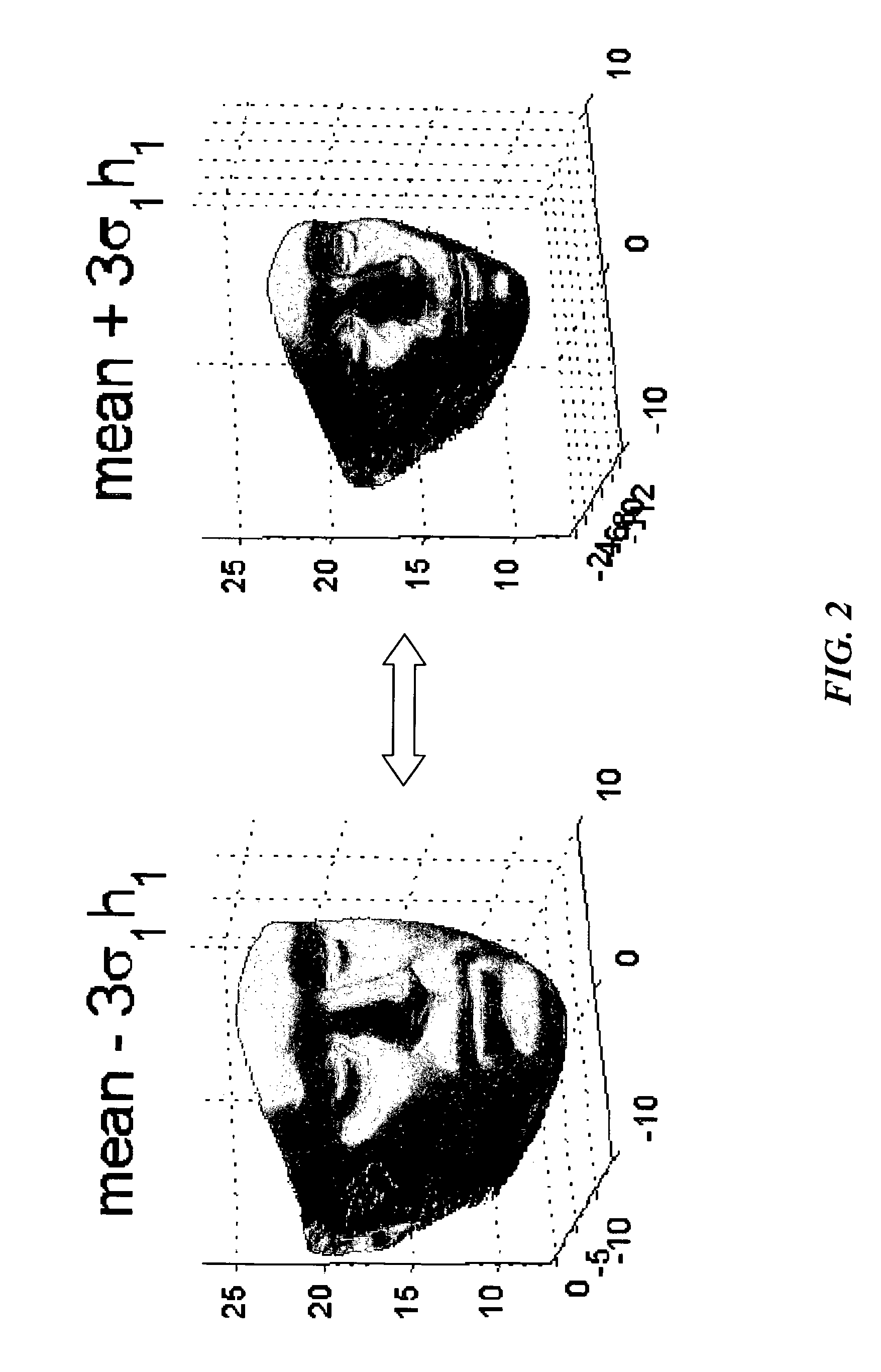Constructing heads from 3D models and 2D silhouettes
a head and silhouette technology, applied in the field of image processing, can solve the problem that the expressive power of data-driven models is only limited, and achieve the effect of accurate geometry and easy expansion
- Summary
- Abstract
- Description
- Claims
- Application Information
AI Technical Summary
Benefits of technology
Problems solved by technology
Method used
Image
Examples
Embodiment Construction
Method Overview
[0025]FIG. 1 shows a method 100 for synthesizing heads from 3D models and 2D silhouettes according to the invention. As stated before, by ‘head’ we means the face portion from chin to brow, and ear to ear.
[0026]In step 110, a large number of 3D geometric models of heads are acquired and stored in a database. The geometric models can be acquired by any number of known techniques, e.g., laser scanning, 3D scanning (NMR, CAT, MRI), and the like. The geometric models can be represented in the form of, for example, polygon meshes, discrete sample points, distance fields, and the like. The faces can vary as to age, gender, and race for different individuals.
[0027]In step600, multiple correspondences between the 3D geometric models are determined by identifying like geometric feature on the various models, e.g., features on the nose, eyes, eyebrows, ears, mouth, brow and chin.
[0028]Principal component analysis (PCA) applied 130 to the correspondences determine basis vectors ...
PUM
 Login to View More
Login to View More Abstract
Description
Claims
Application Information
 Login to View More
Login to View More - R&D
- Intellectual Property
- Life Sciences
- Materials
- Tech Scout
- Unparalleled Data Quality
- Higher Quality Content
- 60% Fewer Hallucinations
Browse by: Latest US Patents, China's latest patents, Technical Efficacy Thesaurus, Application Domain, Technology Topic, Popular Technical Reports.
© 2025 PatSnap. All rights reserved.Legal|Privacy policy|Modern Slavery Act Transparency Statement|Sitemap|About US| Contact US: help@patsnap.com



